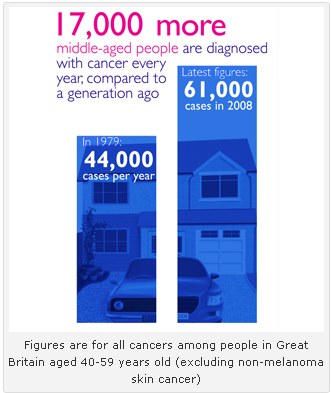…nor will your Blackberry, Android handset and presumably not your iPad either.
Despite the hopes and dreams of millions of technophobes and pseudoscientists, the biggest ever study of mobile phone use shows that the devices do not increase the risk of brain tumours. The European study looked at more than a third of a million mobile phone users over an 18-year period, according to the BBC.
Researchers at the Institute of Cancer Epidemiology, Danish Cancer Society and the International Agency for Research on Cancer (IARC) in France assessed all Danes aged over 30 years born in Denmark after 1925 and subdivided into mobile phone subscribers and non-subscribers who had used the devices since before 1995. Writing in the British Medical Journal, the team describes how there were just 356 cases of the brain cancer, glioma, and 846 cancers of the CNS, which is about the same incidence rate as seen in people who did not use a mobile phone during that period. Even those who used mobiles for more than 13 years, there was no difference in risk, the researchers conclude.
So, will this be the end of the tabloid mobile phone cancer scaremongering? Of course, not! The tabloid media and the conspiracy theorists will claim the study is spurious, there will be another study (undoubtedly much smaller) that will show the opposite and that mobile phones do cause brain tumours. But, as it stands: “These results are the strongest evidence yet that using a mobile phone does not seem to increase the risk of cancers of the brain or central nervous system in adults,” Hazel Nunn, head of evidence and health information at Cancer Research UK, told the BBC.
So, is it time that the World Health Organisation abandoned its application of the precautionary principle and re-classified mobile phones as non-carcinogenic? There are always those people who are over-cautious and there always those who throw caution to the wind. But, like coffee, smoking, alcohol, crossing the road, and living in general, there are risks and precautions to be taken. It is unlikely that anyone will stop doing the things they want to do simply because there is some perceived risk associated with the activity. However, this latest study shows that mobile phone use really does not cause brain cancer. There has been no indication that anyone was seriously worried, as mobile phone use simply goes up and up. Time to stop worrying.
![]() Frei, P., Poulsen, A., Johansen, C., Olsen, J., Steding-Jessen, M., & Schuz, J. (2011). Use of mobile phones and risk of brain tumours: update of Danish cohort study BMJ, 343 (oct19 4) DOI: 10.1136/bmj.d6387
Frei, P., Poulsen, A., Johansen, C., Olsen, J., Steding-Jessen, M., & Schuz, J. (2011). Use of mobile phones and risk of brain tumours: update of Danish cohort study BMJ, 343 (oct19 4) DOI: 10.1136/bmj.d6387

